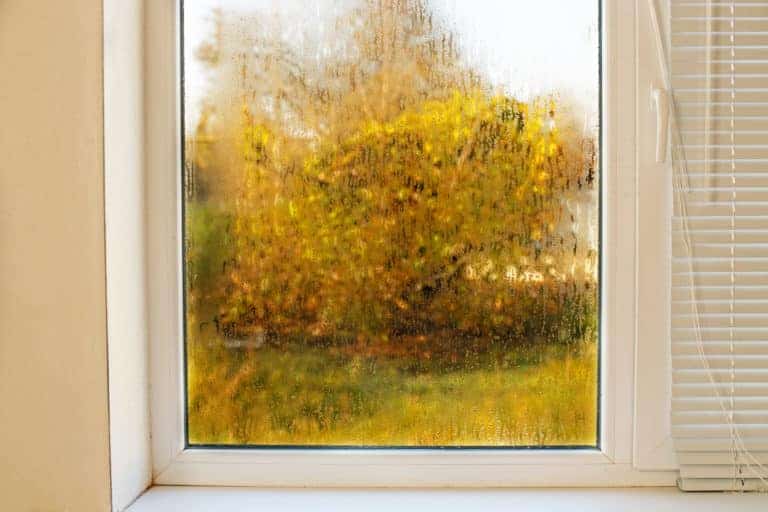Heatwaves are becoming increasingly common—nearly doubling in regularity over the last decade—and have had a dramatic impact on overall energy use. And while you may not have the power to predict the climate, you aren’t powerless when it comes to protecting your wallet. As households across the nation crank air conditioning units to the max, installing solar screens can help homeowners outsmart the utility crunch.
With a little upfront cost, this one upgrade can save a small fortune over time. This guide will cover everything you need to know about solar window screens and solar door screens.
Continue reading for information on:
- How Solar Screens Work
- Saving Money with Solar Screens
- Solar Screen Styles and Colors
- Other Perks to Solar Screens
How Solar Screens Work
Not unlike most window and door screens, solar screens are constructed of a mesh-like material—typically polyester—with the purpose of impeding the effects of direct sunlight.
The Basics of Solar Screens
Solar screens tackle a variety of sun-related effects. The most common concerns addressed by solar screens are:
- Glare Reduction – Depending on the location of your windows and doors in relation to the sunlight, certain times of day will produce blinding glares that are reflected off of televisions and household mirrors. Solar screens are incredibly successful in reducing those glares!
- Heat Control – From reflecting sunlight to absorbing the heat, solar screens cut the amount of sunlight let into your and reduce the internal temperature.
- Managing Natural Light – From a purely aesthetic perspective, solar screens can be used as a valuable tool to manage the amount of natural light cast into your home.
- UV Protection – Depending on the tightness of the mesh weave you select, solar screens can block up to 99% of harmful UV rays.
Understanding the Science
To better understand exactly how solar screens yield their efficacy, let’s review the science.
In an oversimplification, solar screens control the amount of light and heat allowed to pass through your windows and doors. Varying degrees of effectiveness is accomplished by adjusting everything from the tightness of the mesh weave to applying particular patterns and materials to create the intended results.
Solar screen manufacturer Insolroll breaks down the key factors that make solar screens effective:
- Solar Reflection
- Solar Transmittance
- Solar Absorption
- Openness of the Fabric
- Heat Gain
Pro Tip: Talking with an experienced solar fabric specialist, like a team member here at the Glass Guru, can help speed up the learning curve.
Saving Money with Solar Screens
Solar screens are designed to block out a large portion of the sun’s rays, thus reducing the heat inside a home. Homeowners who currently have solar screens can save up to 30% on air conditioning costs, and keep their house 15 degrees cooler (on average).
Easing the Burden on Appliances
With less heat inside your home, common appliances you rely upon don’t need to work as hard. This is especially true during heat waves. In an intense heat spell, window air-conditioning units and HVAC systems work overtime to maintain comfortable temperatures. But this can be an uphill battle when heat is pouring in through unscreened windows and doors!
With solar screens installed throughout the home, you don’t need to overclock your hardware in order to bear the heat. The less you run your appliances, the more money you save on your energy bill.
Maximizing Efficiency in Any Climate
Solar screens aren’t relegated strictly to communities in hotter climates. Conversely, in colder temperatures, they can be used to retain the heat inside a home. Given their multifaceted utility, homeowners can adopt solar screens to appease a variety of needs.
For instance, if you’re curious how to utilize a solar screen for your own home, consider the following:
- A Screen on the Inside of a Window – This type of installation is ideal for cold climates. The interior set screen will absorb the sunlight, trapping the heat inside, which reduces the need to run your heater.
- A Screen Tacked on the Outside of a Window – In extremely hot climates, a solar screen installed on the outside of a window will trap heat before it enters your home. This option will leave your home cooler during high temperatures.
- A Screen Hung Outside of a Window with a Gap Between – This is the most optimal installation for cooling your home. Given that the heat is captured by the screen—and there’s a space between the screen and window—the internal temperature is better regulated. To that end, if the area you’re in is prone to windy weather, this type of positioning is even better suited to ward off heat.
Pro Tip: Experts recommend applying screens universally throughout your home. Selecting just a few windows and doors can greatly reduce the efficacy of the screens. While it’s not an “all or nothing” endeavor, you stand to save more money with full coverage.
Calculating Your Savings
Every home is unique, which makes calculating the exact amount each home can save from installing solar screens difficult. Despite this, there are a few factors to mull over when tabulating your potential savings, such as:
- What is 30% of your average monthly cooling (or heating) costs?
- How many more years do you plan on staying in this home?
Break down the number of years you plan on staying in the home into months. Now multiply the number of months by your estimated monthly savings. This quick formula should help you articulate a rough cost-savings estimate.
Solar Screen Style Options
From distinct mesh colors to rollaway interior screens, there are no limits when it comes to styling options for solar screens. If you’re looking to narrow down your options, consider the following characteristics:
- Openness Factor
- Light or Dark Mesh Screens
- Mesh Color Choice
- Frame Design
Openness Factor
One of the most common solar screen metrics is the openness factor, often referred to as the OF. This measurement refers to the tightness of the mesh weave. The tighter a mesh’s weave is, the less light passes through the screen. The looser a mesh’s weave is, the more light will pass through.
The industry typically breaks down openness factors into these varying degrees:
- Low Openness Factor – This option blocks the most sun and offers maximum UV protection. It’s ideal for areas that experience high temperatures and intense sunlight.
- Medium Openness Factor – This level of openness provides a hybrid of UV protection and outdoor visibility. It’s a happy medium between visibility and heat protection.
- High Openness Factor – For the beautiful vantage points in your home, consider a high openness factor. The loosest of the weaves, this option is the most “open.” And while it offers the most visibility, a high openness factor solar screen still provides excellent UV and glare protection.
Light or Dark Screens
The tint of your solar screens can have an effect on their performance as well. As you likely know, darker colors absorb light while brighter colors reflect it. In which case, take these two considerations into account:
- Lighter Screens – The lighter the screen, the easier it’s going to be to reflect and ward off heat. These screens are ideal for keeping a home cool without sacrificing much natural light.
- Darker Screens – While a great choice for maximum glare control, darker screens tend to absorb heat and leave the interior considerably darker.
Style Choices
Although the functionality of the frame doesn’t necessarily affect a solar screen’s efficacy, it’s still an important style choice! If you’re considering frames, your options include but are not limited to:
- Fixed frame
- Sliding screens
- Retractable frames
- Rollaway shades
Color Choices
Installing solar screens doesn’t mean sacrificing your home’s aesthetic. Thankfully, solar screens come in all sorts of colors and designs, often curated based on the home’s color palette and engineering. With that being said, a few common colors include but are not limited to:
- Black
- Gray
- Dark Browns
- Lighter Browns
- Whites and Off-Whites
Other Perks to Solar Screens
While solar screens are designed specifically for the purpose of blocking harmful UV rays and sunlight, they are still quite effective in aspects you would expect from standard door and window screens.
Reduce Fading
Sunlight doesn’t just overheat your home, it can also fade furniture and damage the surface of your fixtures. If you want to protect some of your items that are consistently beneath sunlight, a solar screen can do the trick.
Airflow
Solar screens also offer the most sought-after luxury of standard window and door screens—increased airflow. After upgrading, homeowners can enjoy natural breezes while still avoiding the adverse effects of direct sunlight.
Pest Control
Solar screens are also powerful tools in protecting a home from insects. You can keep the windows open while keeping out:
- Houseflies
- Birds
- Mice
- Rats
- Horse-Flies
- Cockroaches
- Centipedes
- Crickets
Solar Screens Pay For Themselves
As you’ve learned, solar screens are quite versatile. They can minimize your energy bill, regulate internal temperature, keep harmful UV rays at bay, protect your furniture, and repel pesky pests.
When you’re ready to save money with solar screens, reach out to a local solar screen specialist here at The Glass Guru! From choosing the right type of material, approximating a quote, to answering any questions you might have, we’re here to help.
Ready to make a rewarding upgrade?
Sources:
Global Changle. Heat Waves – USGCRP Indicator Details. https://www.globalchange.gov/browse/indicators/us-heat-waves
Insolroll. How Solar Screens Work. https://insolroll.com/how-solar-screen-shades-work/
The Glass Guru. Solar Screens. https://www.theglassguru.com/services/screens/solar-screens/
Every Solar Thing. Solar Screens. https://www.everysolarthing.com/blog/solar-screens/




